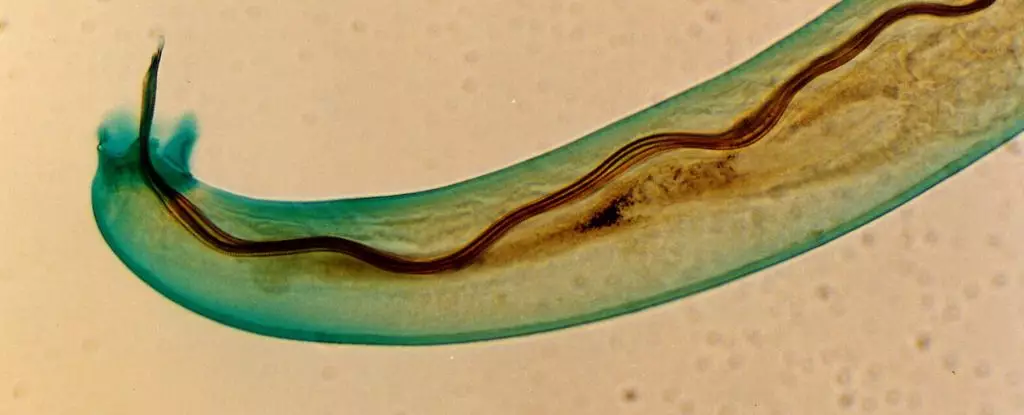In an age where global travel is commonplace, the risk of encountering unknown pathogens becomes a stark reality. A 30-year-old woman from the United States experienced this firsthand when she returned from a trip to Thailand, Japan, and Hawaii. Initially, her symptoms seemed innocuous—a burning sensation in her feet—but soon escalated into a harrowing medical journey that revealed the insidious nature of parasitic infections.
The woman first sought medical attention when the burning sensation in her extremities intensified. However, her initial visit did not yield alarming test results, as doctors only noted a mild increase in her white blood cell count. Despite this, her symptoms escalated over the following days, spreading pain beyond her feet and culminating in agonizing headaches. This progression of discomfort prompted her to return to the hospital, where she was treated with anti-inflammatories and anti-anxiety medications, leading her to believe relief was at hand.
Yet, symptoms persisted, and the woman’s condition took a turn for the worse. Confusion set in, a red flag that prompted her partner to rush her back to the hospital. Here, the medical team faced the challenge of diagnosing an ailment that appeared both atypical and complex.
Arriving at the hospital, the woman’s doctors suspected a potential central nervous system infection. Though initial tests revealed no clear signs of parasitic infection, a lumbar puncture changed the course of her diagnosis. The cerebrospinal fluid (CSF) tests indicated eosinophilic meningitis, suggesting a rare but serious type of brain infection typically linked to parasites. This introduced the potential diagnosis of angiostrongyliasis, a cerebral ailment involving the parasite Angiostrongylus cantonensis, otherwise known as rat lungworm.
The life cycle of this parasite is particularly devious. It begins in rodents, eventually migrating to slugs and snails, leaving victims unknowingly exposed to infection through contaminated food sources. For a traveler, this emphasizes the importance of food safety and hygiene, especially in regions where such diseases are endemic. This case serves as a powerful reminder that washing vegetables thoroughly and avoiding undercooked seafood can be crucial measures.
Despite the peculiar nature of her infection, treatment began promptly. The woman was placed on a two-week course of medication specifically designed to penetrate the blood-brain barrier and combat the parasite causing her ailment. Additionally, a high dose of prednisone was administered to reduce inflammation within her brain. This combination not only targeted the parasite but also offered relief from the debilitating symptoms she had endured.
Her treatment plan appears standard in retrospect, but at the time, it required swift action by a team of doctors who would not let ambiguity guide their decisions. This highlights an essential principle in modern medicine: a multifaceted approach is often necessary, especially when dealing with rare infections that may mimic other medical conditions.
By the sixth day in the hospital, the woman experienced a significant improvement. The treatment effectively quelled her symptoms, allowing her to return home, free from parasitic threats. It serves as a testament to the resilience of the human body, combined with appropriate medical interventions.
The implications of this case extend beyond the individual’s experience. It raises crucial questions around global health, travel-related illnesses, and the urgent need for heightened awareness about parasites that can latch onto unsuspecting travelers. In an increasingly interconnected world, the potential for disease transmission from one locale to another presents a growing risk that cannot be overlooked.
For travelers, understanding the risks associated with specific regions is imperative. Practical advice, such as proper food handling, thorough washing of produce, and being cautious with local delicacies, can mitigate these hidden dangers.
As public health professionals continue to study and address these concerns, every incident like this woman’s offers valuable insights into the interactions between humans, their ecosystems, and the pathogens that may accompany them. In the age of global travel, fostering awareness and maintaining vigilance against these silent invaders could save lives and protect public health on a larger scale.
Ultimately, the journey of this woman from traveler to patient reminds us that the allure of adventure carries with it potential precautions, and understanding those risks is our responsibility. Each travel story must carry with it not just tales of excitement but also lessons in safety, ensuring that our explorations do not come at the cost of our well-being.

